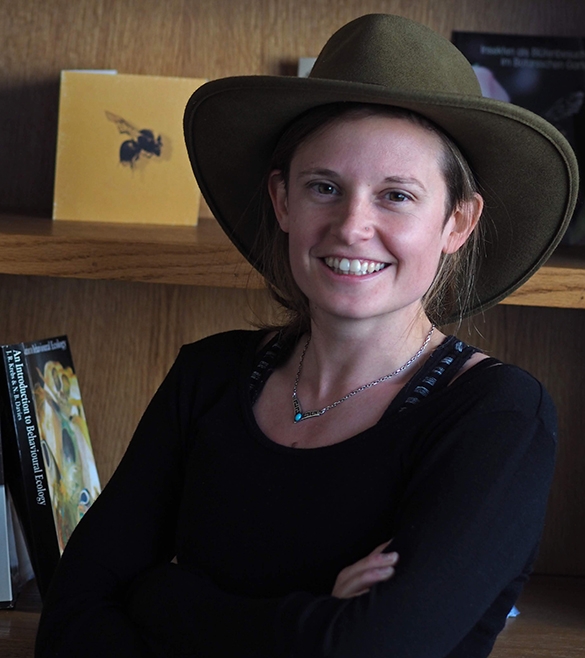
Not the honey bee, not the carpenter bee, not the bumble bee, not the cuckoo bee and not any of the other assorted bees minding their own bees-ness in the meadow.
You're not yellow, you're not fuzzy, you're not social and you're just not certain.
Makes you wonder if you're having an identity crisis, right?
Bee scientist Felicity Muth, an assistant professor in the Department of Integrative Biology at the University of Texas, Austin, sets the record straight in her charming book, "Am I Even a Bee?," illustrated by Alexa Lindauer. It's a children's picture book, but let's face it, we're all children at heart, and everyone likes to feel appreciated. We all want to belong.
Fact is, there are more than 20,000 known species of bees in the world and about 4000 of them are native to the United States. California alone has 1600 species. The smallest known bee is the solitary bee, Perdita minima, about 2mm long. The largest bee in California is the Valley carpenter bee, Xylocopa sonorina, which measures about an inch long.
Yet the non-native honey bee, a social bee, grabs all the attention and little Osmia, a solitary bee, wonders if she's even a bee.
With the help of her friend, Xylocopa, nicknamed "Xyla," Osmia discovers that (1) yes, she is indeed a bee (2) yes, she's a pollinator and (3) yes, she's important to our ecosystem.
It's good to see Felicity Muth spreading the word about the diversity of bees, and why, in the process, it's crucial to protect them.
Like human beings, bees come in many shapes, sizes and colors. Some are specialists, such as the squash bee, which pollinates only squash and other members of the cucurbits family. Some are generalists, like the honey bee.
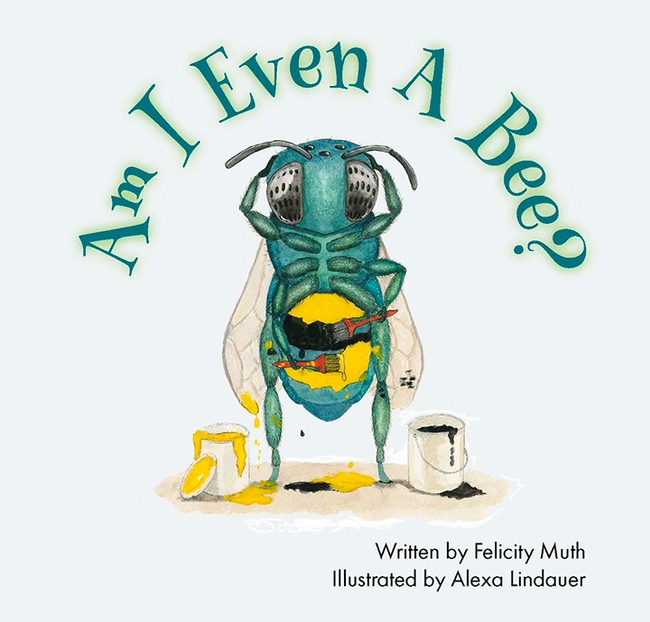
In her real (academic) life, Muth works with commercial and wild bees (bumble bees, mason bees, and squash bees) "using experimental approaches to investigate questions in animal behavior and cognition from an ecological perspective...we also address anthropogenic effects on bee cognition, behavior an health."
Muth delivered a presentation on her book at the Entomological Society of America's joint meeting (with the Entomological Societies of Canada and British Columbia), held last month in Vancouver, B.C.
Muth knows science writing and science communication: her credits include publishing her work in Scientific American and being interviewed on National Public Radio's Science Friday. She holds a doctorate (2012) in animal behavior and cognition from the University of St. Andrews in Scotland. She discovered her passion for bees as a postdoctoral researcher at the University of Arizona and the University of Nevada, Reno.
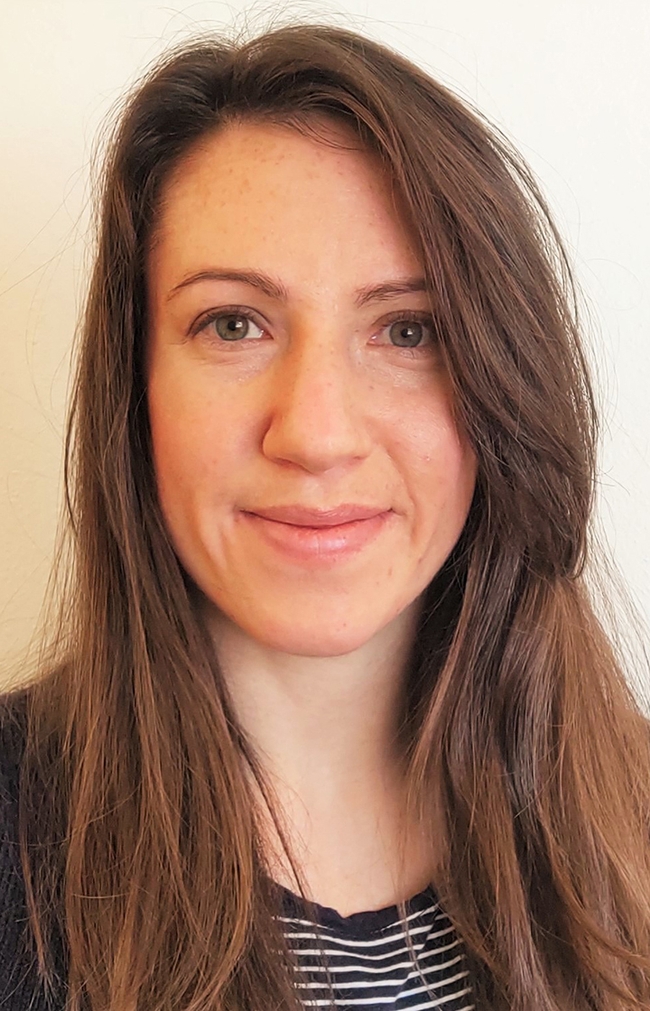
"Am I Even a Bee?" is a book you'll want to place in a prominent place in your library--let your "Zoom" audience see it on your shelf. Then, re-read it when you, as Osmia, think others (honey bees) are getting all the recognition, respect and admiration while you're being ignored. In fact, as U.S. Geological Survey (USGS) says on its website: "Native bees are the primary insect pollinator of agricultural plants in most of the country. Crops that they pollinate include squash, tomatoes, cherries, blueberries, and cranberries. Native bees were here long before European honeybees were brought to the country by settlers (honeybees are not native to North America). Honeybees are key to a few crops such as almonds and lemons, but native bees like the blue orchard bees (Osmia) are better and more efficient pollinators of many crops, including those plants that evolved in the Americas. Native bees are estimated to pollinate 80 percent of flowering plants around the world."
Meanwhile, let's take a look at the diversity of bees in these images below, mostly taken in Vacaville, Calif. They come in many shapes, sizes and colors.
What's not to like about a bee?
Attached Images:
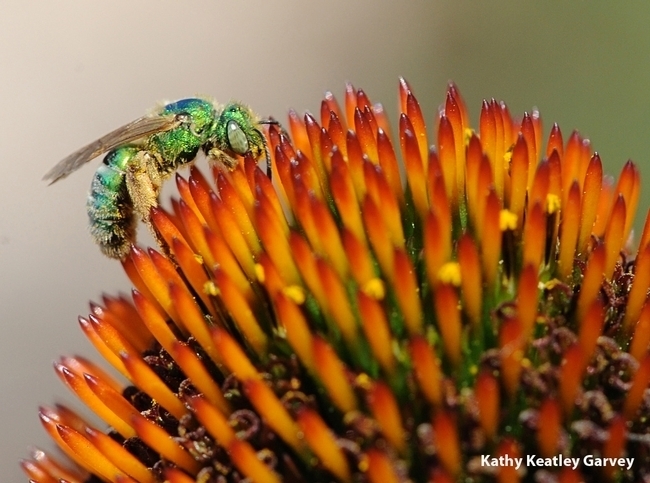
A female metallic green sweat bee, Agapostemon texanus, on a purple coneflower. (Photo by Kathy Keatley Garvey)

A male Valley carpenter bee, Xylocopa sonorina, on germander. (Photo by Kathy Keatley Garvey)
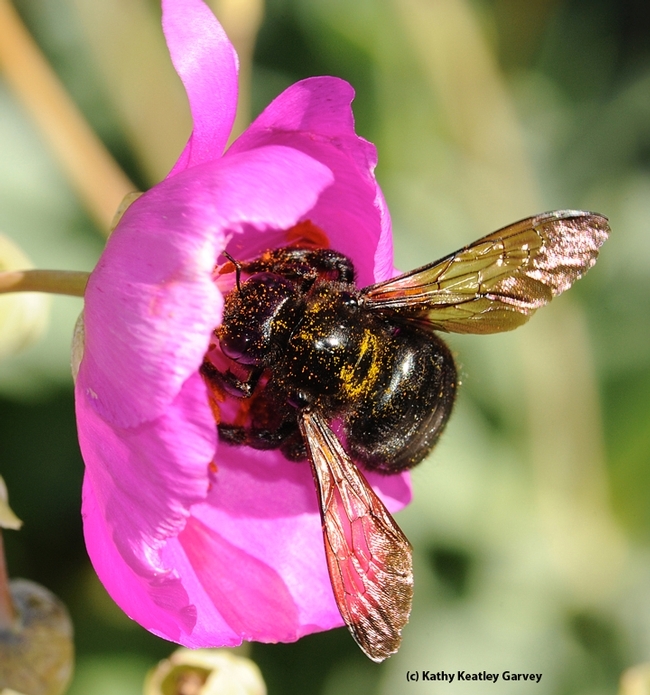
A female Valley carpenter bee, Xylocopa sonorina, on rock purslane. (Photo by Kathy Keatley Garvey)
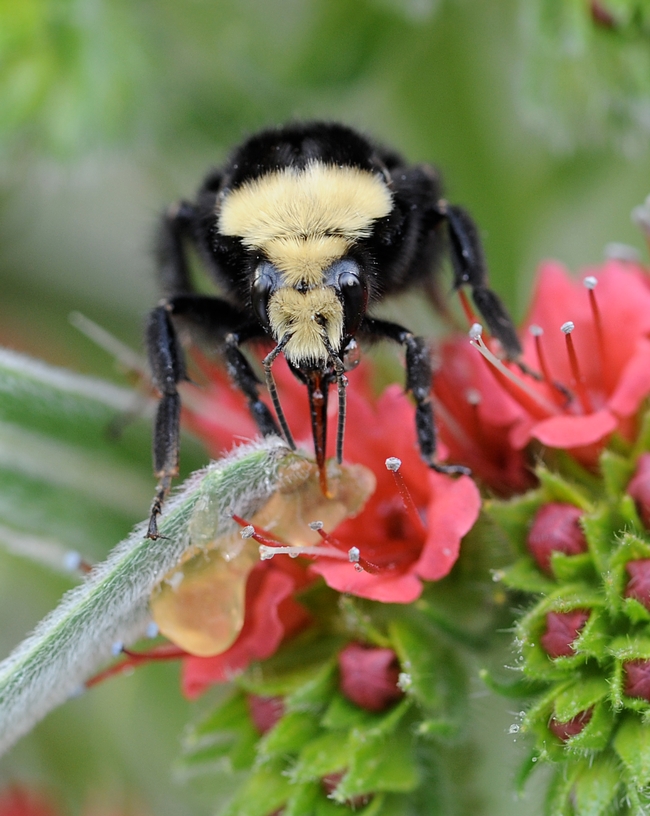
A yellow-faced bumble bee, Bombus vosnesenskii, on a tower of jewels, Echium wildpretii. (Photo by Kathy Keatley Garvey)
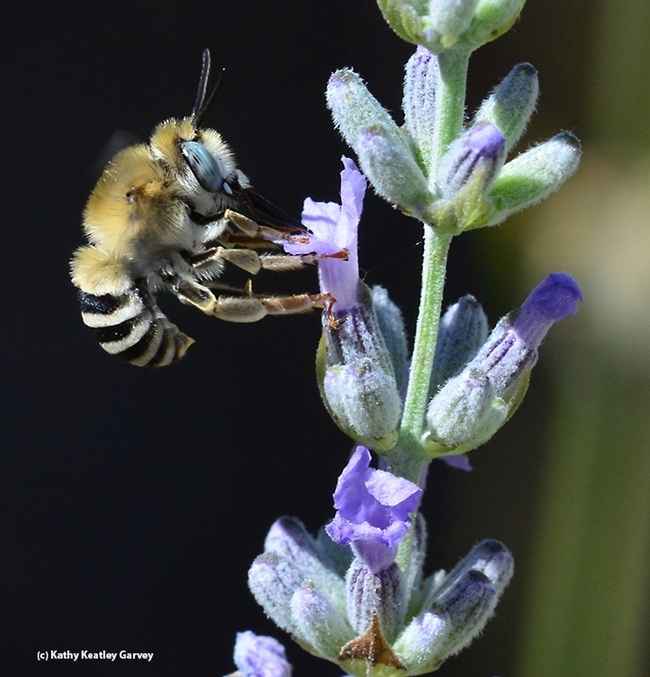
A digger bee, Anthophora urbana, sipping nectar on lavender. (Photo by Kathy Keatley Garvey)
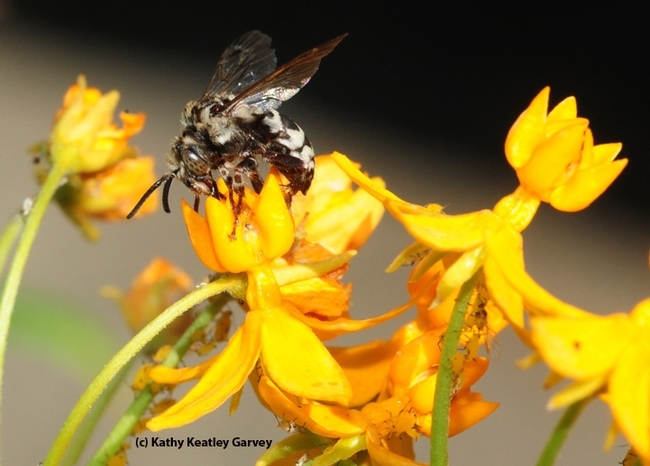
A cuckoo bee, Xeromelecta californica, sipping nectar from a tropical milkweed, Asclepias curassavica. (Photo by Kathy Keatley Garvey)
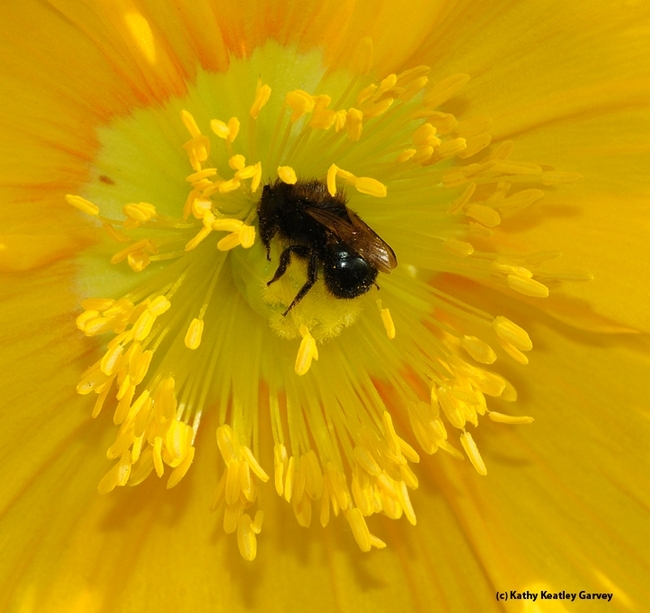
A blue orchard bee, Osmia lignaria, nectaring on Cosmos. (Photo by Kathy Keatley Garvey)
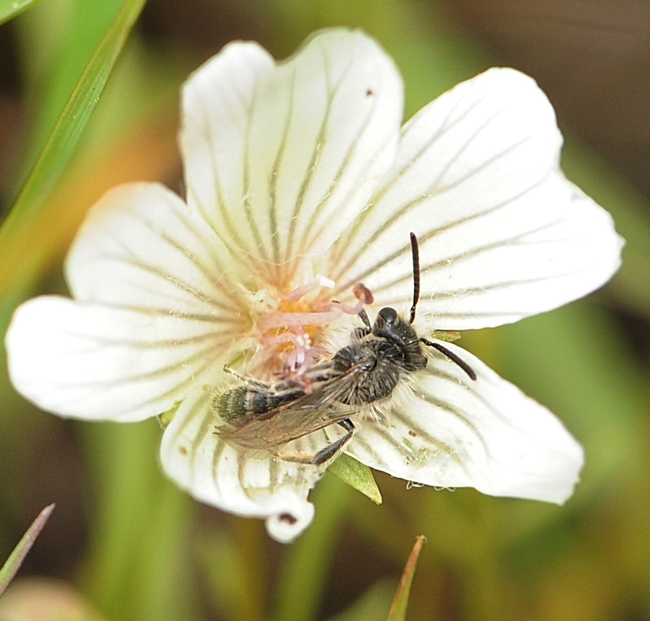
A male Andrena pulvera (mining bee) on meadowfoam. (Photo by Kathy Keatley Garvey)
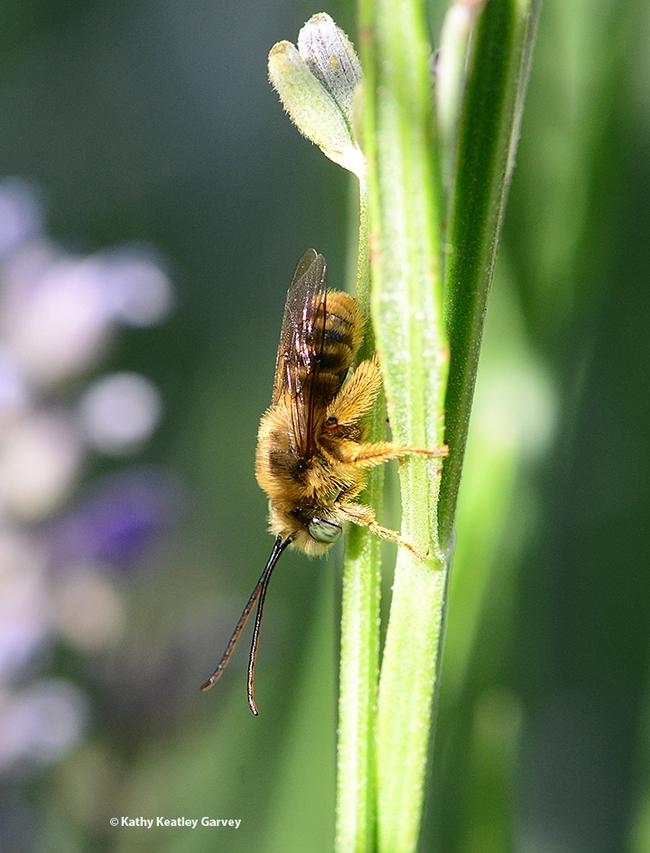
A male longhorned bee, Melissodes agilis. (Photo by Kathy Keatley Garvey)
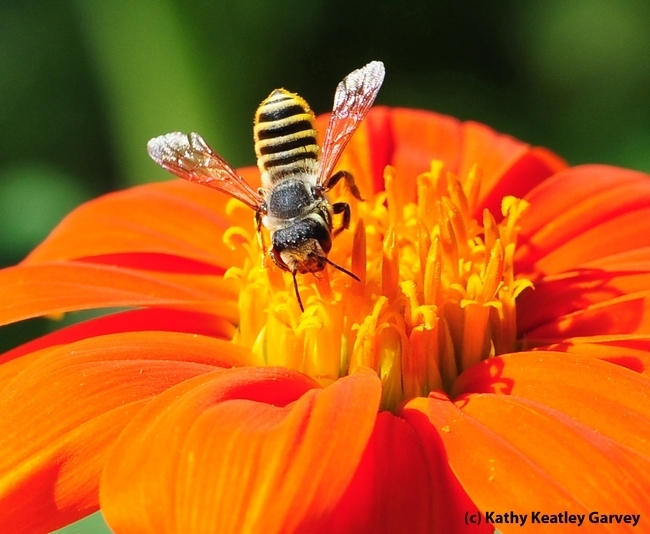
A female leafcutter bee, Megachile fidelia, foraging on a Mexican sunflower, Tithonia rotundifola. (Photo by Kathy Keatley Garvey)
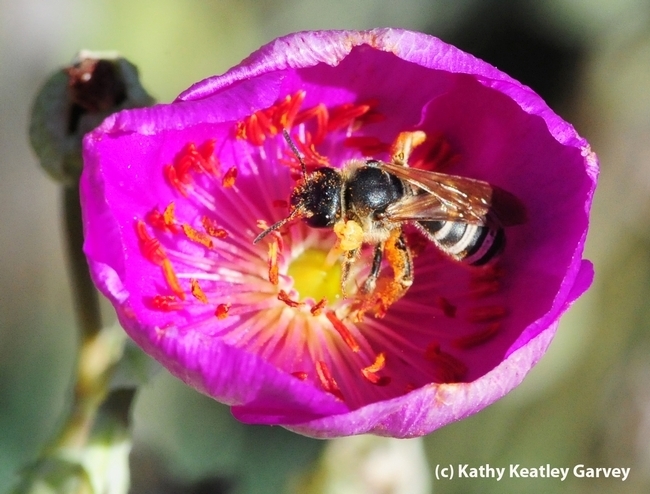
A sweat bee, Halictus farinosus, foraging on rock purslane. (Photo by Kathy Keatley Garvey)
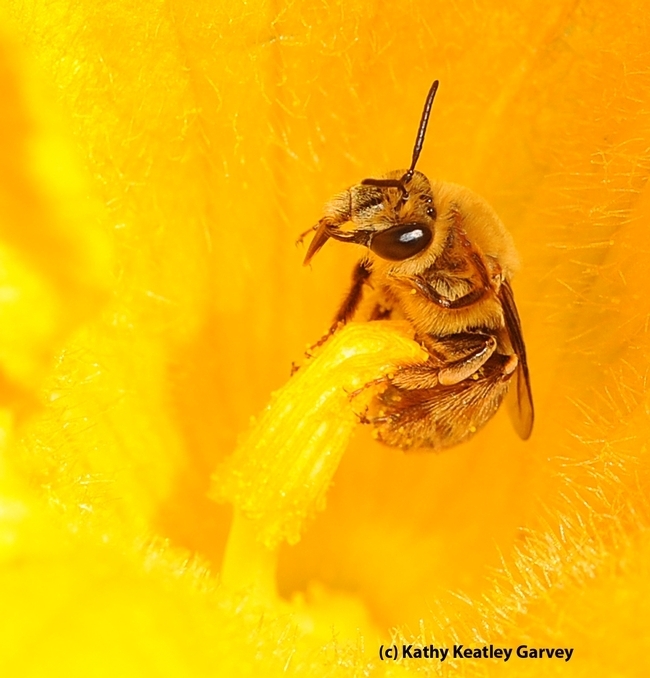
Squash bee, Peponapis pruinosa, pollinating a squash blossom. (Photo by Kathy Keatley Garvey)